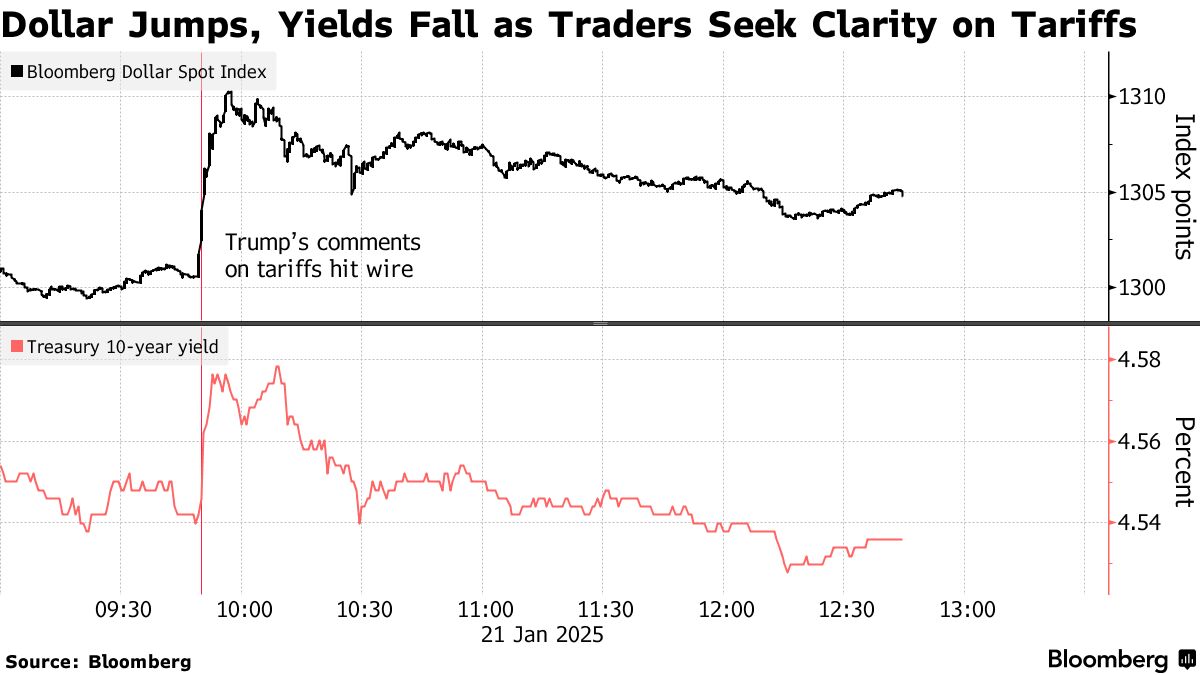US President-elect Trump said on the 20th that he plans to impose the previously threatened tariffs of up to 25% on Mexico and Canada by February 1, and reiterated his view that the two neighboring countries are allowing illegal immigrants and drugs to flow into the US, he said in a press conference in the Oval Office:
We are considering a 25% tariff on Mexico and Canada because they are allowing a massive influx of people into the US, and I think we will take action by February 1.
These two countries are crucial to US energy and automotive imports, Trump's tariff plans on these two countries could trigger a trade war among the signatories of the USMCA agreement signed during Trump's first term, according to 2022 data, the agreement governs the flow of $1.8 trillion in goods and services trade.
Canada and Mexico have both stated that if Trump imposes tariffs, they will retaliate against US goods, and the USMCA agreement will be reviewed in 2026.
After Trump's remarks, the US dollar rose against most major currencies, the Bloomberg Dollar Index rose as much as 0.7%, the biggest gain since December 18, the Canadian dollar and Mexican peso fell more than 1.4% at one point, and the US 10-year bond yield fell 8 basis points to 4.54%.

On the other hand, as Trump did not announce immediate tariffs on China, the world's second-largest economy, the Chinese market felt some relief, but he instructed the government on his first day in office to comprehensively address unfair global trade practices and investigate whether China has complied with the agreements he signed during his previous term, it seems he is preparing for future negotiations.
Will the US dollar continue to rise?
Saxo Markets Chief Investment Strategist Charu Chanana analyzed that, as expected, the relief from tariffs is only temporary, the tariffs are only delayed, not canceled, but Canada and Mexico appear to be the focus, and there is still hope for negotiations with China, which means the Chinese market may still be supported.
Maybank Securities Trading Head Kok Hoong Wong said that the 25% tariff on Canada and Mexico is quite aggressive, and the February 1 deadline is almost too tight to leave room for both sides to negotiate, Hong Kong and China may not be completely unaffected.
National Australia Bank Senior Foreign Exchange Strategist in Sydney Rodrigo Catril believes that if the 25% tariffs on Mexico and Canada are about to be implemented, then higher tariffs on China will certainly follow quickly, and the US dollar still has room to rise.
Typically, a rise in the US dollar index is not good news for the stock market, and if US stocks plummet when they open tonight after not opening last night, that could put some pressure on Bitcoin's performance tonight.






